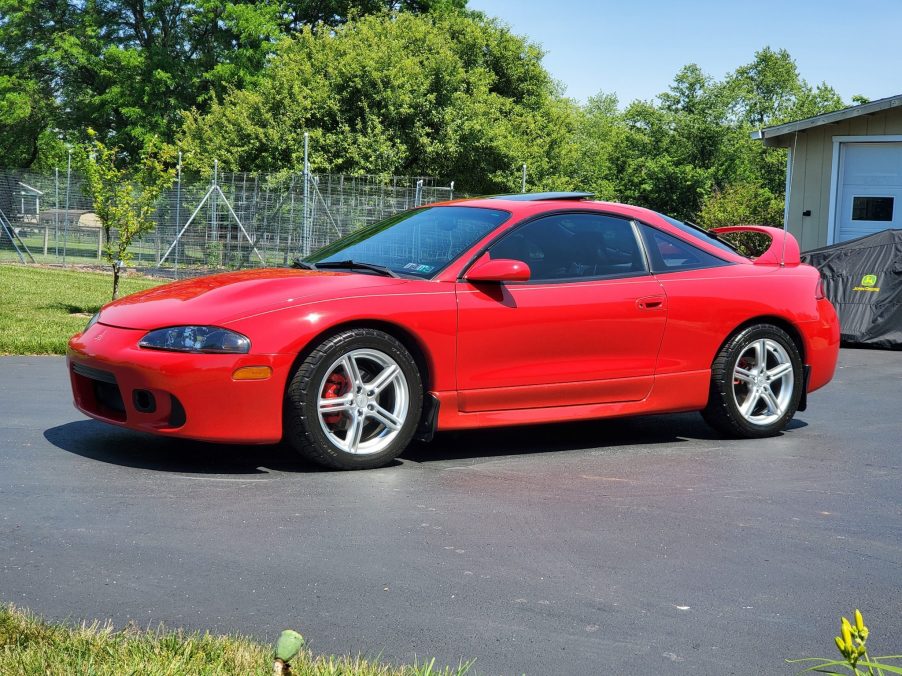
The Mitsubishi Eclipse Was One of the Most Important Cars in the Tuner Scene
Do you remember watching “The Fast and The Furious” and seeing the lime green Mitsubishi Eclipse grace the screen as the lead character, Brian O’Connor, does a test in the Dodger Stadium parking lot? Yeah, it was an iconic scene, but what you might not remember is that the Mitsubishi Eclipse itself was an iconic car in the tuner scene as a whole. It’s too bad it didn’t get more recognition.
What is so great about the Mitsubishi Eclipse?
For those not in the know, the Mitsubishi Eclipse was the brand’s two-door compact sports car that was in production from 1990 to 2011. During that span of time, it went through four different generations with each one being drastically different than the last. However, if you’re really into the import tuning scene, the first two generations were the only ones that really mattered.
We say that because the earliest versions of the Eclipse were the product of a joint venture between Mitsubishi and Chrysler. In fact, there were technically three versions of the same car at the time: the Eclipse, the Eagle Talon, and the Plymouth Laser. However, the Japanese-branded Eclipse was the more popular one as the Talon parted ways in 1998 and the Laser only last until 1994.
The first generation (1990-1994) came in either front- or all-wheel-drive and was powered by the venerable 4G63 engine, which was a turbocharged, 2.0-liter four-cylinder that put out 195 hp and could rocket the car from 0 to 60 mph in less than seven seconds, according to Mitsubishi. Even better, the engine responded well to tuning and other modifications, so getting it to produce over 500 hp wasn’t too hard. As you can imagine, that’s where the fun, as well as the cult following, began.
Was it just about the engine?
The Mitsubishi Eclipse’s legacy wasn’t just about what it had under the hood, but it was able to put the power to the ground as well. Opting for the GSX trim level meant that the car had an all-wheel-drivetrain that made the car a terror on the drag strip and on curvy roads. And to top things off, Mitsubishi redesigned the car for its second generation, which started in 1995, by adding more power to the 4G63 engine (now 210 hp) and updating its aesthetics to a more modern, smoothly shaped coupe that looked futuristic at the time and still looks good today.

What happened to the Eclipse?
As time went on, Mitsubishi split from Chrysler and took the Eclipse back to the drawing board in 1999. For the 2000 model year, the third-generation Eclipse was released but it lacked a turbocharged and an all-wheel-drivetrain, and as such, it lost its popularity in the tuner scene.
Mitsubishi tried to resurrect some of the old tuner feelings by making the fourth-generation Eclipse look somewhat similar to the legendary second-generation one, however, it again fell flat with enthusiasts and the general public, which later led the brand to discontinue it in 2011.

What about the Eclipse Cross?
In an effort to get into the crossover game and possibly stir up nostalgia by using the Eclipse nameplate, Mitsubishi released the Eclipse Cross, which is still in production today. And while it might be sporty for a crossover and look the part, it’s just not the same, and unfortunately, there hasn’t been an uptick in the brand’s popularity ever since.



